Shockingly, it has been over three months since Cinema Smack’s last State of the Franchise. There simply haven’t been any new entries into expansive franchises to cover lately. Of course, sequels appear to be a way of life in Hollywood so, no, they’re not going to go away. Though, it’s quite surprising that it has been so long before a reputable film series has had a new sequel. Well, that all changes this week as the eighth(!) film in the Saw franchise, interestingly titled Jigsaw, hits theaters.
At this point, it has been seven years since the last Saw film was released. Before that, sequels to the original 2004 hit were perennial Halloween-time releases. Altogether, the films have grossed over $873 million at the box office and are likely to add more cash to the pile with the release of Jigsaw. What started out as a small and unique new take on the horror genre turned into an absolute juggernaut that got a bit too cute for its own good over the course of its seven installments. While the films originally felt smart, they eventually became so convoluted and bogged down with unnecessary plotlines that would become the franchise’s undoing.
The idea for Saw came from James Wan and Leigh Whannell. The two collaborated on a screenplay for a horror film but filmed a brief scene to use as a pitch for their full length script. The scene that was filmed and shown to studios was the infamous reverse bear trap scene from the original 2004 film. Eventually, Lionsgate agreed to make the film with a $1.2 million production budget. Originally, Saw was to be a direct-to-DVD release but, thanks to favorable responses at the Sundance Film Festival, it was released theatrically. Saw raked in over $103 million worldwide following its release which is a monstrous amount considering its low production budget.
The first Saw film is essentially a case study on a person’s will to live. Two men, Adam (Leigh Whannell) and Dr. Lawrence Gordon (Cary Elwes) are chained in a decrepit bathroom by their feet. Their kidnapper is someone that goes by the name “Jigsaw.” While not technically a murderer, Jigsaw puts his victims in traps and gives them an opportunity to survive or die trying to save themselves. In the case of the first film, Dr. Gordon’s task from Jigsaw is to kill Adam. Though, the two must also work together to put the pieces together as to why they’re both being held captive. As the film continues, you discover the reasoning behind both men being captured and their connections to one another.
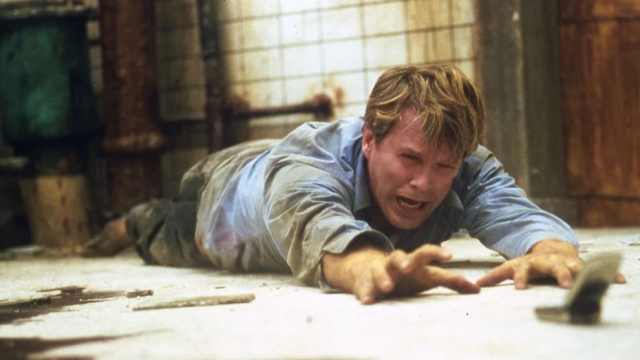
Of course, Saw was a huge success and rightfully so. It’s easily one of the most original horror ideas of the 2000’s and it sparked the “torture porn” sub-genre. Though, this film, and arguably the second, don’t necessarily fit into that niche. While violence is implied and there is a bit of blood, it’s never overdone. While we’d normally delve into each film in more detail, this State of the Franchise will be a little bit different. Over the course of its seven movies, the franchise has twisted and turned itself on end countless times. To chronicle the events of every installment would be doing them a disservice. Instead, this franchise is split by its two main villains. Both are lumped in under the “Jigsaw” name but the franchise really changes following the jump from one to another. From here on in, expect some important spoilers.
While the first Saw focused on a small group of people, the rest of the series adds more and more cannon fodder for Jigsaw to kill off with his deadly games. Also, the rest of the series doesn’t hide the fact that cancer patient John Kramer (Tobin Bell) is the mastermind behind the Jigsaw name. Jigsaw, and, in turn, Bell, has become synonymous with the most popular killers in the horror genre such as Freddy Krueger and Michael Myers.
Both Saw II and III focus more heavily on John Kramer and his life changing disease. John’s games become more complex and multilayered as his numerous victims tend to all have ties to one another somehow. He also takes on an apprentice who’s revealed at the end of the second film. Amanda Young (Shawnee Smith) was the only victim to survive her trap in the first film and, from there, she pledged herself to carry on John’s work after he succumbs to cancer. The stages of his disease progress over the first three movies as he’s wheelchair-bound in II and literally on his deathbed in III.
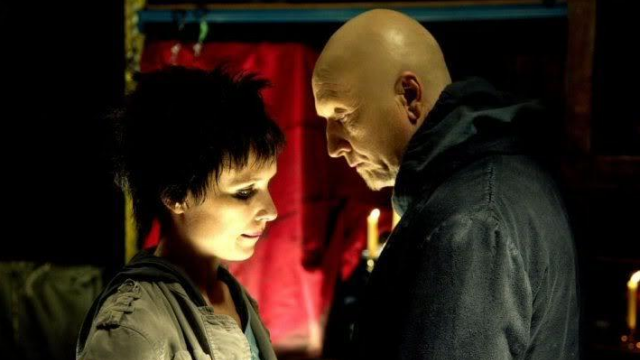
The first two sequels remain the most financially successful of the entire franchise both domestically and worldwide. Most fans also agree that they’re the two best entries next to the original. It’s hard to argue that since both Saw II and III elaborate on the backstory of John Kramer and his relationship with his apprentice, Amanda, while also introducing interesting, yet complicated, protagonists like Detective Eric Matthews (Donnie Wahlberg) and Dr. Lynn Denlon (Bahar Soomekh).
Darren Lynn Bousman took over directorial duties for Saw II. His involvement was unplanned as he was shopping his script for a film called The Desperate. It eventually made its way into the hands of Gregg Hoffman who showed it to his fellow Saw producers, Mark Burg and Oren Koules. They decided that it should be the starting point for the first sequel. After Leigh Whannell returned to co-write The Desperate into the Saw universe, Bousman was retained for two additional sequels beyond II. Opinions differ among fans but Saw II is arguably the best of the entire series. It adds more wrinkles to the story and is more concise than the original while avoiding any lulls. The second film was definitely more gory than the first but still not to the extent that the series would eventually see in Saw III and beyond.
Specifically, Saw III began a trend of gross-out horror in the series. While the first two films explored the idea of how far people would go to stay alive without being exploitative, all caution was thrown to the wind for the later sequels. The focus became how violent, gory, and downright vile each of the traps could be. In III, there are plenty of scenes that would make anyone cringe. There’s a trap where someone is restrained to the bottom of a vat as dead, rotting pigs are chopped up and drained into it as well as Lynn Denlon’s surgical procedure where she alleviates pressure on John’s brain. Of course, you actually get to see John’s brain. For what reason exactly? No one can be too sure.
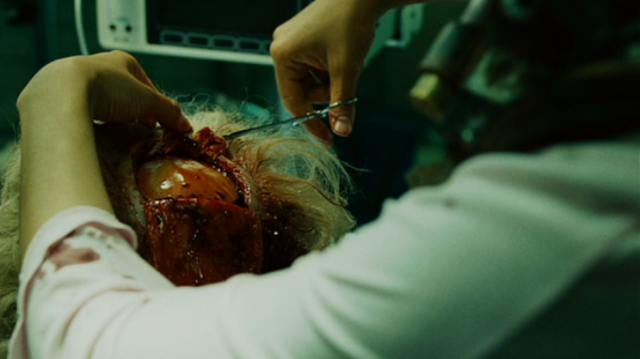
Darren Lynn Bousman is responsible for two of the best sequels and also, quite possibly, the worst. Saw IV is an absolute mess of ideas old and new. This is where the split in the series begins. John Kramer and Amanda Young are killed off in Saw III but Jigsaw’s work continues by an unknown accomplice. The only real connection to the previous movies is Lieutenant Daniel Rigg (Lyriq Bent). Bent’s Rigg was a minor character in II and III but somehow stumbled into a starring role here. Unfortunately, he’s the most undeserving of Jigsaw’s wrath as he’s punished for “trying to save everyone.” For anyone who’s not a fan of the series, Jigsaw’s goal is to teach people the value of life. Therefore, there should be no reason to punish Rigg.
This is also the first film to feature Lieutenant Mark Hoffman as the new Jigsaw. In addition, we’re introduced to FBI Agent Peter Strahm (Scott Patterson) and John Kramer’s ex-wife, Jill Tuck (Betsy Russell) as main characters. As it turns out, Hoffman is the mastermind behind Rigg’s test that sees the return (and demise) of Eric Matthews. Strahm is very unlikable as the foil to Hoffman and Jill’s role fluctuates throughout the subsequent sequels. Again, this is the film where the series takes a huge turn and just feels different than its predecessors. The ideas aren’t as fleshed out, the meaning behind the punishment is missing, and the series simply exploits blood and guts for horror. Maybe this was intentional due to the change of antagonists but it’s doubtful. After all, Tobin Bell still frequently appears as John Kramer in flashbacks.
Saw IV was a huge misstep for the franchise. It does very little to progress the story forward and set up the new characters. The final reveal of Hoffman as Jigsaw’s mystery accomplice is so lackluster due to the fact that Hoffman was an inconsequential character up until then. However, where IV failed, Saw V succeeded. Although the main “game” features a bunch of characters that you don’t have time to care about, nor would you anyway, the flashback sequences of the history between John and Hoffman are great. Whereas you knew absolutely nothing about Hoffman before, Saw V actually makes sense of the character. From this point on, Hoffman makes a decent villain even though he doesn’t hold a candle to Bell’s John Kramer.
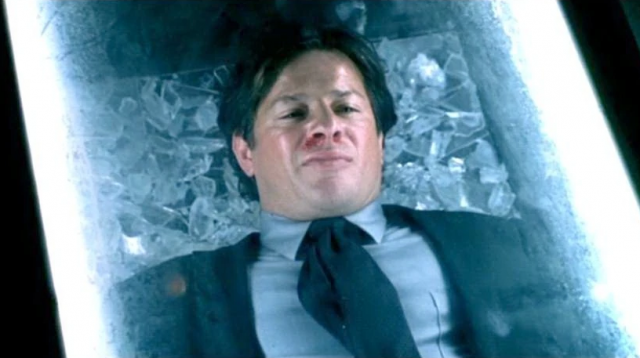
As is the case with most of the Saw movies, you can argue that Saw VI is the best of the later sequels. It still has the problems of the other Hoffman-led films but it seems to manage them better. As the rivalry between Hoffman and Jill Tuck heats up, there’s also a game being played. An insurance executive, Will Easton (Peter Outerbridge), is put to the test as he’s required to use his “risk assessment” formula to choose which of his colleagues will live or die through a number of games. It’s an interesting idea in its own right. However, this, again, is not how John Kramer’s Jigsaw operates. It makes absolutely zero sense for him to take the lives of the innocent in an attempt to punish someone. On top of that, despite not being alive, this is John’s game and not Hoffman’s.
This may be somewhat petty but one of the most annoying things about Saw VI is one of its taglines, “The game has come full circle.” No, it hasn’t. The meaning behind something coming full circle is that an event ends up back where it started. You could argue that Will handed John his death sentence after denying coverage of an experimental treatment for his cancer which sent John down his murderous path. Though, in the grand scheme of the Saw timeline, that’s a very lackluster place to begin. If any film should’ve received that tagline, it’s Saw 3D: The Final Chapter.
Oddly enough, Saw VI is the lowest grossing film in the entire series across the board. At the time, many speculated that it would be the last of the series. When it was discovered that there would be a seventh, it probably killed some of this film’s momentum. By this time, audiences simply wanted to see the end of the story. Overall, Saw VI is a solid installment that ends with an ending that appeared to set up one more film. Hoffman versus Jill is all that should matter throughout the final movie. That’s not the direction that the filmmakers took though.
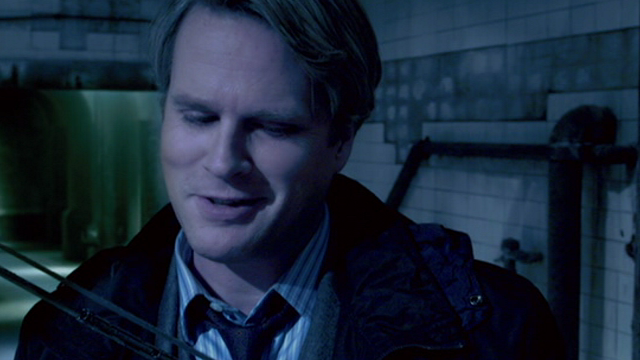
In one of the worst kept secrets in all of horror, Cary Elwes finally reprised his role as Dr. Gordon for the series’ swan song. It had been rumored and hinted at in every film but didn’t happen until 2010 in The Final Chapter. While this sequel finally gave fans what they wanted from the story, along with all the blood and guts from the later sequels, Saw 3D: The Final Chapter is regarded as one of the worst of the franchise. It’s not hard to see why either. It has a few interesting ideas with Jigsaw’s main victim, Bobby Dagen (Sean Patrick Flannery), posing as a Jigsaw survivor. Yet, being the supposed finale doesn’t really make a new character resonate with an audience.
What audiences wanted from this film was a resolution to the labyrinthine storyline that weaved throughout the series. There was no need for more new stuff. Simply end the story. The reveal of Dr. Gordon meant absolutely nothing since the film opens with him escaping the events of the original. From there, it’s quite obvious that he will be introduced as John Kramer’s true successor. If they had just saved him for the end, it may have actually been a shock after such a long holdout from actor Cary Elwes. Instead, the filmmakers blew the surprise early and issued a ho-hum finale to a surprisingly good series.
As many people know, the word “final” means absolutely nothing in the horror genre. The Friday the 13th series ignored the word two different times with Friday the 13th: The Final Chapter and Jason Goes to Hell: The Final Friday. The idea of resurrecting the Saw franchise has been kicked around for years and finally happens this weekend with Jigsaw. A number of names associated with the franchise in the past will also be returning in some capacity. Though Gregg Hoffman has since passed away, Mark Burg and Oren Koules return as producers with original creators James Wan and Leigh Whannell serving as executive producers. Charlie Clouser performs the music once again so we can definitely count on hearing that now-legendary “Hello Zepp” theme. Also, Kevin Greutert, the director of VI and The Final Chapter, serves as film editor as he had on every other movie.
At this point, it’s unknown if Jigsaw is going to be any good. After a seven year hiatus, it’d be a shame if it isn’t a decent attempt to revive the series. It’s a bit concerning that the writers’, Pete Goldfinger and Josh Stolberg, biggest claim to fame is Piranha 3D. In addition, the directors, Michael and Peter Spierig, are relatively unknown. While the series became a little bit of a joke over the course of its original run, there’s no doubt about it that it’s one of the most consistent horror franchises around. Even the misstep that is Saw IV isn’t unwatchable. There are always interesting wrinkles added into the multilayered story and the series’ faithfulness to continuity is unrivaled. If Jigsaw is able to reinvigorate the Saw franchise, we can expect to see another new string of sequels in the near future.

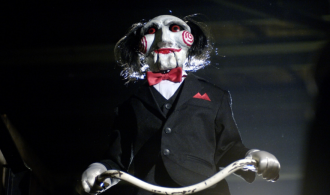
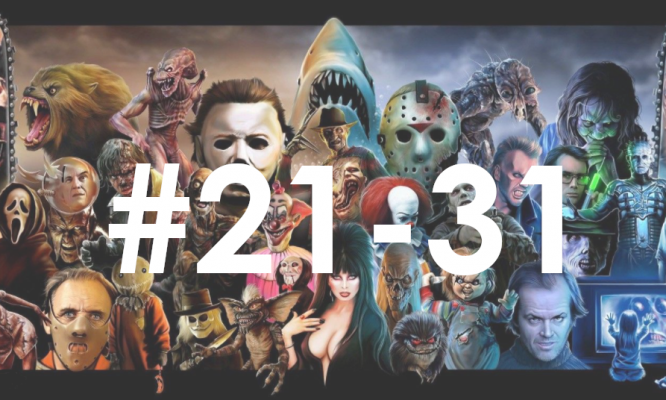
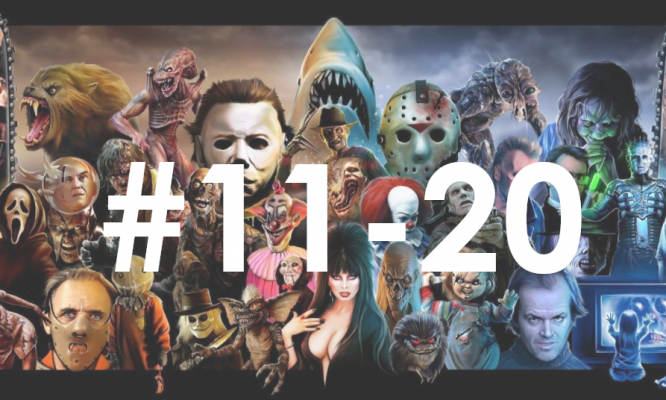
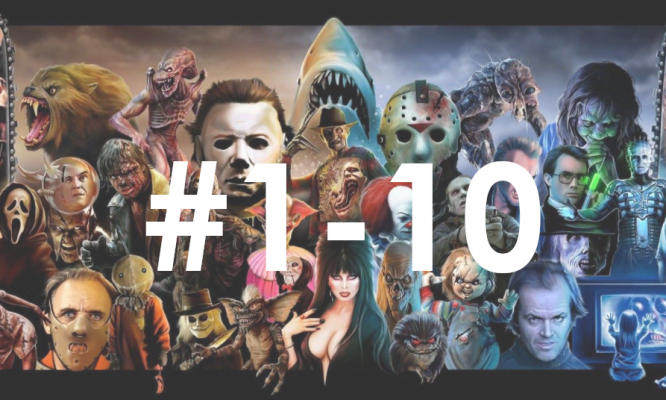
[…] week in our State of the Franchise on the Saw series, we discussed how a new entry to the series had been rumored for years. The series met its […]